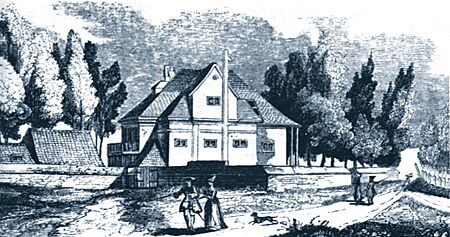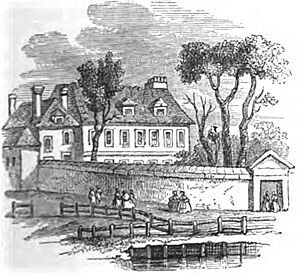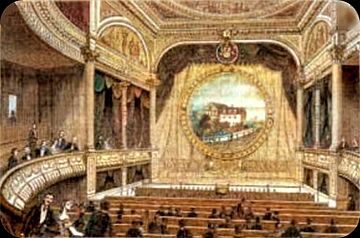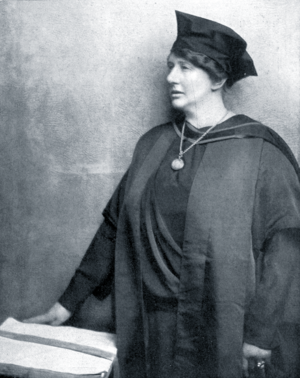Sadler's Wells Theatre facts for kids

Sadler's Wells, 2015
|
|
| Address | Rosebery Avenue London, EC1 England |
|---|---|
| Coordinates | 51°31′46″N 0°06′22″W / 51.529444°N 0.106111°W |
| Owner | Sadlers Wells Trust |
| Designation | Grade II listed |
| Type | Dance, production and receiving house |
| Capacity | 1,500 on three levels 200 Lilian Baylis Studio |
| Opened | (Catalan) 1683 |
Sadler's Wells Theatre is a famous place in London where people go to watch amazing performances. It is located in Rosebery Avenue, Islington. The building you see today is actually the sixth theatre built on this spot! Sadler's Wells started as a fun garden in the late 1600s. It became a theatre building around the 1680s.
Because it didn't have the right license for plays, the theatre became known for dancing, animal shows, pantomime, and big shows. These even included sea battles in a huge water tank on the stage! In the mid-1800s, rules changed, allowing plays. Sadler's Wells then became famous for Shakespeare plays put on by Samuel Phelps from 1844 to 1862. After that, the theatre had good and bad times. It was eventually left empty and fell apart.
A kind person named Lilian Baylis, who owned theatres, bought and rebuilt Sadler's Wells in 1926. Along with her other theatre, the Old Vic, Sadler's Wells became home to dance, drama, and opera groups. These groups later grew into the famous Royal Ballet, the National Theatre, and English National Opera. From the 1930s to the 1980s, the D'Oyly Carte Opera Company performed there many times. The English Opera Group, started by Benjamin Britten, also had its London home at Sadler's Wells. Many famous dance groups from around the world visited, like Alvin Ailey and Merce Cunningham companies.
The theatre building that stands today opened in 1998. It has two main performance areas: a large auditorium with 1,500 seats and a smaller Lilian Baylis Studio. There are also many rehearsal rooms and technical areas. Sadler's Wells is now mostly known as a place for dance. It hosts visiting dance companies and also creates its own new dance shows. Sadler's Wells also has a base at the Peacock Theatre in the West End. A new theatre, Sadler's Wells East Theatre, opened in Stratford, London in 2025.
Contents
History of Sadler's Wells Theatre
The First Theatre: 1683–1765
The exact story of how Sadler's Wells began is a bit unclear. Many people say it was started by someone named Dick Sadler around 1683. Others say his name was Thomas or Edward. It's also not certain if it opened in 1683, 1684, or 1685. Some records suggest Sadler had a "Musick-House" even before 1683.
A special well with mineral water was found on Sadler's land in Islington. A famous doctor said the water was good for health. Sadler found two more wells and started selling the water. Drinking mineral water was popular back then, like going to a spa. Many London doctors told their patients to drink it. By 1685, hundreds of people visited the Musick-House every morning for the water. Sadler added beautiful gardens and hired entertainers like tumblers, rope-dancers, and musicians. He even partnered with a violinist named Francis Forcer.
The spa's popularity didn't last long. By 1691, it wasn't a trendy place anymore. Sadler sold two wells, and the main one even dried up. The entertainment became the main reason people visited. Sadler likely died or retired around 1697. Forcer then partnered with James Miles, and the wooden building was called "Miles's Musick-House." They had ballad singers, jugglers, wrestlers, dancing dogs, and even a "singing duck"!
In the early 1700s, the spa's reputation got worse. By 1736, the theatre was seen as a place for ordinary people, not the fashionable crowd. One writer in 1699 described the audience as "Butchers and bailiffs, and such sort of fellows." In 1711, it was called "a nursery of debauchery."
Miles passed away in 1724. Forcer's son took over and made the theatre much nicer. He tried to get rid of the "disorderly" people. After he died in 1743, John Warren took over, and things got bad again. The authorities even closed the place. Then, Thomas Rosoman and Peter Hough took over and reopened Sadler's Wells in 1746. This started 20 years of good times for the old wooden theatre. Rosoman rebuilt much of the wooden building in 1748–49.
Rosoman hired a regular group of actors, and the Musick-House truly became a theatre. He introduced a new type of show called burlettas. Back then, only two special theatres could put on plays without music. Sadler's Wells and others had to play music in the background while actors spoke, so it seemed like a musical show. The rules weren't always strictly followed. Even The Tempest was performed there in 1764, but it was a musical version.
In 1763, Rosoman hired dancers from the Theatre Royal, Drury Lane. This was good for both theatres because Sadler's Wells was open in spring and summer, and the other theatres were open the rest of the year. This made Sadler's Wells more important. The new Ballet Master was Giuseppe Grimaldi, whose son Joseph later became a huge star at Sadler's Wells. Rosoman did very well. In 1764, he announced that the old theatre would be torn down and rebuilt in a "most elegant manner."
The Second Theatre: 1765–1802
Rosoman was a builder, so he replaced the wooden theatre with a brick one. The new building was finished in just seven weeks and cost £4,225. It opened in April 1765. People liked the new theatre. A London newspaper said it was "considerably enlarged" and looked "splendid and magnificent."
In 1771, Rosoman retired. He sold his share of the theatre to Thomas King, an actor friend of David Garrick. King took over in December 1771. He continued to offer popular shows like tumblers, singers, and acrobats. King especially liked pantomimes, making the theatre a rival to the Theatre Royal, Haymarket, for these shows. His shows included Vineyard Revels and The Whim-Wham. In 1781, Joseph Grimaldi, who was only two years old, made his first appearance dancing with his sister.
By the 1790s, the theatre needed repairs. The owners, including William Siddons (husband of famous actress Sarah Siddons), planned a "new inside" to make the building strong for 50 more years.
The Third Theatre: 1802–1879

Sadler's Wells reopened in 1802 with a completely rebuilt inside. In 1804, it got a new and exciting feature: the Aqua-show! A huge water tank was put under the stage for shows with water. Another tank above the stage created waterfall effects. Water came from the nearby New River. This made Sadler's Wells famous for "nautical dramas" (sea stories) for 30 years. Grimaldi, known as "the unchallenged king of clowns," continued to be the main clown until 1820.
In 1843, the law that limited plays to only two theatres was changed. The next year, serious plays came to Sadler's Wells. From 1844 to 1862, actor Samuel Phelps managed and starred at the theatre. He wanted to bring Shakespeare to everyone. Sadler's Wells mostly had a local audience from Islington, who were working class. The theatre was big (2,500 seats) and had low rent, which was good for business.

Phelps believed theatres should show "the works of our great dramatic poets." He felt other London theatres weren't doing this. He put on over 1,600 performances of 31 Shakespeare plays. He also showed many other plays from different time periods. Famous actors like Laura Addison and Isabella Glyn were part of his company. Phelps himself played many roles, from Hamlet to Falstaff. His shows were very accurate to Shakespeare's original texts and paid attention to historical details. People from outside Islington, including writers like Charles Dickens, started coming to the theatre.
After Phelps left in 1862, the theatre showed different kinds of performances. Even with stars like J. L. Toole, they didn't do very well. Many managers tried to make the theatre successful, but it closed in 1874. There were even plans to turn it into public baths. The building was in bad shape and was used for roller-skating, lectures, boxing, and wrestling. In 1878, Sidney Frances Bateman, who ran the Lyceum Theatre, bought the lease for Sadler's Wells.
The Fourth Theatre: 1879–1915
Bateman hired C. J. Phipps to design a new inside for the theatre. It reopened in October 1879. Phipps changed the seating area, making the dress circle and gallery extend closer to the stage. This made the theatre hold more people. A newspaper called The Era said Sadler's Wells was now "one of the largest and most conveniently-constructed London Theatres." Islington was no longer a small village but part of London, and it was easy to reach by buses and trams.
Bateman hoped to make the theatre famous for classic plays again, like in Phelps's time. But she died in 1881. Despite her improvements, some said the audience in the gallery on Saturday nights was "the most villainous" in London. There were attempts to turn the theatre into a music hall, but the authorities wouldn't allow it.
The only big change to Phipps's building was a new entrance porch added by architect Bertie Crewe in 1894. In the early 1900s, the theatre also showed movies on Sundays and live "cowboy melodramas" during the week. But it didn't do well. A critic wrote in 1914 that the theatre looked "shabby and disconsolate."
Famous theatre people like George Bernard Shaw supported a plan in 1914 to save the building and make it "a people's theatre." But the First World War started, and the plan was stopped. Sadler's Wells became run-down and closed in 1915. It did not reopen after the war.
The Fifth Theatre: 1931–1998
Since 1914, theatre owner Lilian Baylis had run drama and opera groups at her theatre, the Old Vic. She kept prices low to attract local, working-class audiences. In 1925, she started a plan to reopen the abandoned Sadler's Wells in a similar way. She raised the money, and the new theatre was designed by F. G. M. Chancellor.
The new theatre opened with a special show on January 6, 1931. It was Shakespeare's Twelfth Night, starring famous actors John Gielgud and Ralph Richardson. Having Sadler's Wells allowed Baylis to create a dance company. She had wanted to do this since 1926 when she hired Ninette de Valois to improve dancing in operas at the Old Vic. The three companies Baylis started later became the Royal Ballet, the National Theatre, and English National Opera.
For a few years, the opera, drama, and ballet companies, called "Vic-Wells" companies, moved between the Old Vic and Sadler's Wells. But by 1935, drama was at the Old Vic, and opera and ballet were at Sadler's Wells. In 1935, both the opera and ballet companies went on their first summer tours. When they were away, the D'Oyly Carte Opera Company performed Gilbert and Sullivan shows. They returned to Sadler's Wells many times until the 1980s.
After Baylis died in 1937, the Vic-Wells Ballet was led by de Valois. During the Second World War, the government used Sadler's Wells as a shelter for people who lost their homes in air raids. The two companies toured during the war. When the theatre reopened in 1945, the companies were briefly together again. But de Valois felt her ballet company wasn't treated equally. She moved her main ballet company to the reopened Covent Garden in 1946. This left Sadler's Wells with a smaller group called the Sadler's Wells Theatre Ballet. The year before, the theatre had hosted the first performance of Benjamin Britten's Peter Grimes. Over the next 20 years, the opera company performed new British works by composers like Verdi and Stravinsky. Britten's group, the English Opera Group, performed at Sadler's Wells from 1954 to 1975. The Handel Opera Society also had its main shows there from 1959 to 1985.
In the 1960s, there were plans for a new opera house. The directors of Sadler's Wells Opera hoped to move there. But the government didn't help pay for the new building. The director still felt Sadler's Wells was too small for big operas like Wagner's Ring cycle. So, in 1968, the company left Sadler's Wells and moved to the London Coliseum. Sadler's Wells then focused mainly on dance. By the 1970s, the dance shows at Sadler's Wells became very diverse. Companies like Ballet Rambert and London Contemporary Dance Theatre had regular performances there. Visiting groups included those of Alvin Ailey and Merce Cunningham.
After the opera company moved, Sadler's Wells hosted opera shows from other groups. In 1983, a new opera company started at Sadler's Wells. With money from a bank, the New Sadler's Wells Opera company focused on operettas (light operas) sung in English. They performed in London and on tour. Their first season included The Count of Luxembourg and Gilbert and Sullivan's The Mikado. They also performed H.M.S. Pinafore and The Merry Widow. Many of these shows were recorded. After the bank sponsorship ended, the company faced financial difficulties and closed in 1989.
In 1994, a new leader, Ian Albery, started a plan to turn Sadler's Wells into a theatre built specifically for dance. While the theatre was being rebuilt for two years, Sadler's Wells temporarily moved to the Peacock Theatre in the West End. It has kept a presence there ever since.
The Sixth Theatre: 1998–Present
The newest theatre was designed by architects RHWL. It opened in October 1998. The design used parts of the 1931 theatre building. It has a larger stage, a 1,500-seat auditorium, three rehearsal studios, and the smaller 200-seat Lilian Baylis studio theatre. This smaller studio is used for developing and showing new, smaller dance works. The current building is a Grade II listed building, meaning it's protected for its historical importance.
The opening season included performances by famous dance companies like Pina Bausch's Tanztheater Wuppertal and William Forsythe's Ballett Frankfurt. Opera companies like the Royal Opera and Welsh National Opera have also performed there.
In 2004, a new director, Alistair Spalding, decided that Sadler's Wells was best when it had its own dance companies and created new works. He said he wanted Sadler's Wells to be for contemporary dance what the National Theatre is for drama and English National Opera is for opera. Following this idea, Sadler's Wells has hired more choreographers and artists to create new dance pieces. In 2004, Breakin' Convention joined Sadler's Wells, bringing hip hop culture through performances and education. The theatre now says it creates and shares more new dance work than any other dance organization in the world.
Sadler's Wells East
In June 2018, the Mayor of London, Sadiq Khan, announced a new theatre called Sadler's Wells East Theatre. It is part of the East Bank project in the Queen Elizabeth Olympic Park in Stratford, London. The theatre opened on January 16, 2025. Its first show, ‘Our Mighty Groove’ by choreographer Vicki Igbokwe-Ozoagu, was on February 6, 2025, which was also its formal opening day. The architects for this new venue were from O'Donnell & Tuomey. This new location focuses on dance.
See also
 In Spanish: Teatro de Sadler's Wells para niños
In Spanish: Teatro de Sadler's Wells para niños










